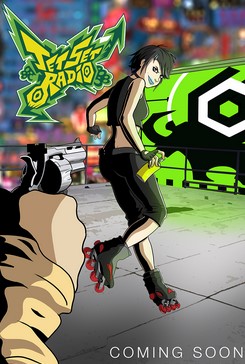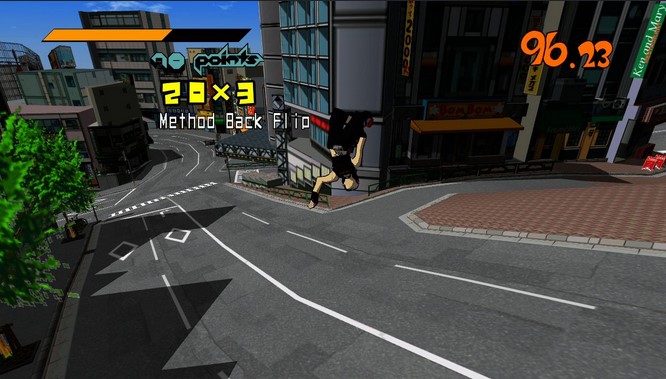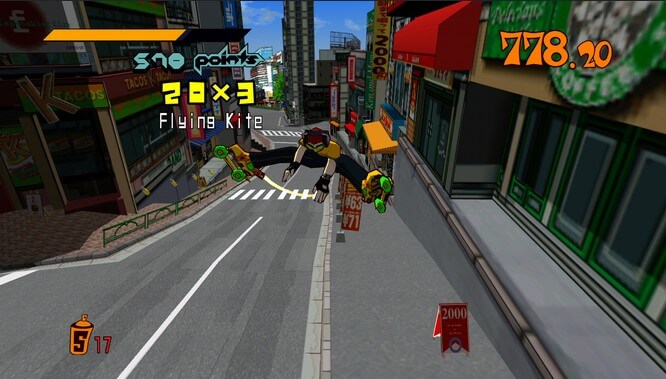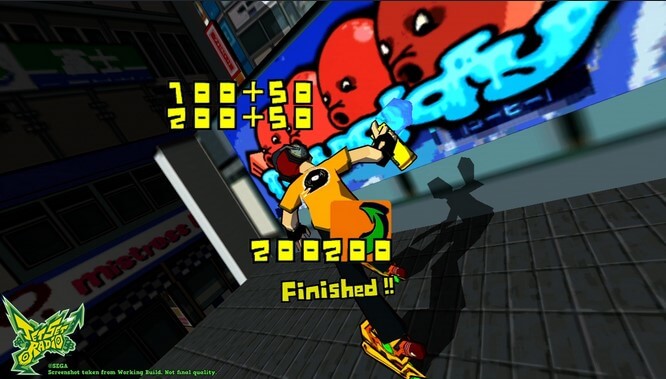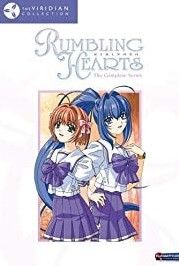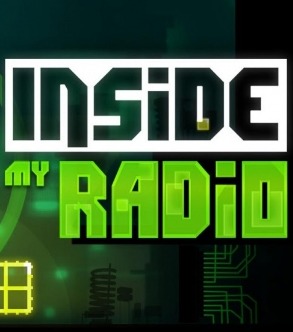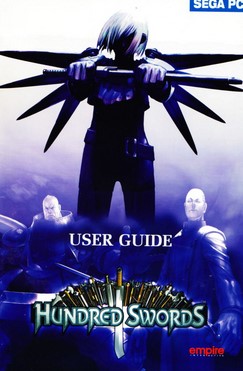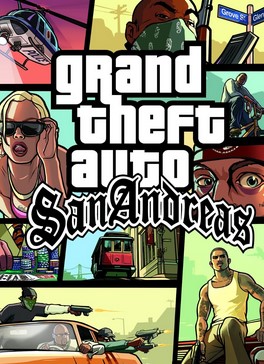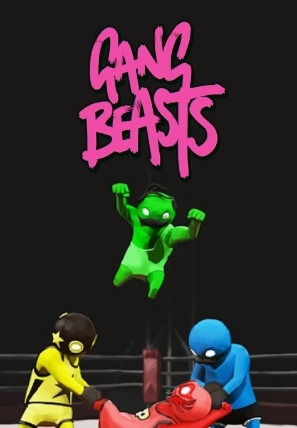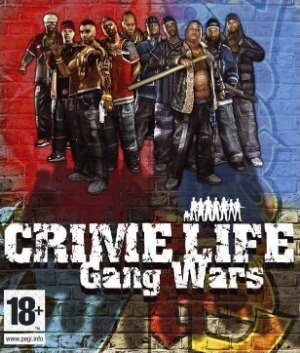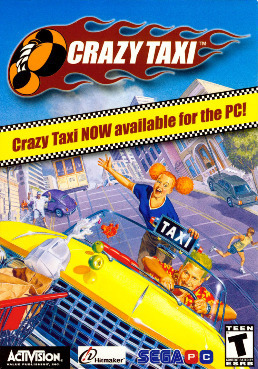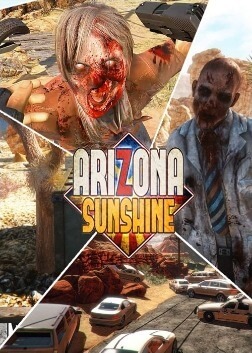Jet Set Radio,a titled Jet Grind Radio on the first North American release, is an action game developed by Smilebit and published by Sega for the Dreamcast in 2000. The player controls one of a gang of youths who skate the streets of a fictionalized Tokyo on inline skates, spraying graffiti and evading the authorities. It was one of the first games to use cel-shaded visuals, giving it a cartoon-like appearance.
A version by Vicarious Visions was released by THQ for Game Boy Advance on June 26, 2003 in North America and February 20, 2004 in Europe. A sequel, Jet Set Radio Future, was released in 2002 for the Xbox. In 2012, a high-definition port was released for multiple platforms.
Gameplay
The player controls one of a gang of graffiti-tagging inline skaters. In a typical stage, the player explores an open 3D environment and must tag every graffiti spot in each area before the timer runs out, while evading the authorities, who pursue on foot, in tanks and in helicopters. New playable characters are unlocked after the player beats them in trick battles.
The game is controlled with only a few buttons, and technical aspects of skating are simplified compared to games such as Tony Hawk's Pro Skater. According to Vice, although Jet Set Radio is "about the fluidity of good skating, the joy of motion and skill ... skating is less the focus and more the medium"; the game instead emphasizes a "general sense of youthful rebellion".
Plot
Professor K, DJ of the Jet Set Radio pirate radio station, broadcasts to gangs of youths who roam the streets of Tokyo-to, rollerblading and spraying graffiti. One skater, Beat, forms a new gang, the GGs, who compete with rival gangs for turf: the all-female Love Shockers in the shopping districts of Shibuya-Cho; the cyborg Noise Tanks in the Benten entertainment district; and the kaiju-loving Poison Jam in the Kogane dockyard. The authorities, led by Captain Onishima, pursue the gangs with riot police, tanks, and helicopters.
The GGs are joined by skaters Combo and Cube, who explain that their hometown, Grind City, has been overtaken by the Rokkaku, a sinister business conglomerate. They plan to free their friend, Coin, who has been captured by the Rokkaku. The GGs confront the Rokkaku CEO, Goji Rokkaku, atop the Rokkaku building, a giant turntable. Goji plans to conquer the world with The Devil's Contract, a vinyl record which reportedly has the power to summon demons. The GGs tag him with graffiti and he falls from the building. Although Coin's fate remains uncertain, freedom is returned to the streets of Tokyo-to. Combo reveals that The Devil's Contract was simply an old indie record with no demonic powers and that wealth had driven Goji to insanity.
Development
Jet Set Radio was developed by Smilebit, a Sega studio formed from members of Team Andromeda, developers of the Panzer Dragoon games for the Sega Saturn. The team was young, with an average age of under 25. Director Masayoshi Kikuchi said the team wanted to create something "cool" that dealt with pop culture and was completely unlike their previous game, the 1998 RPG Panzer Dragoon Saga. Jet Set Radio was one of the first games to feature cel-shaded graphics, with exaggerated shapes, thick lines, and flat, bright colors. According to Vice, "The whole world feels like it could be scrawled on a wall somewhere, reeking of spray paint fumes."
Smilebit drew inspiration from games outside the typical genres of science fiction and fantasy. Artist Ryuta Ueda was particularly inspired by a demonstration of the PlayStation rhythm game PaRappa the Rapper at the 1996 Tokyo Game Show: "I think that’s the first game with pop culture like that. They did it first. After that I decided to make a true game, not just a visual experience, that was actually for adults." The anti-establishment themes of the 1999 film Fight Club were another influence. Ueda's drawings of a punky character with headphones and rollerblades became the foundation of the game. The team developed the cel-shading technique, which has no gradations, to recreate Ueda's art with polygons. Jet Set Radio was announced at the 1999 Tokyo Game Show and drew media attention for its cel-shaded style. The game features graffiti by a variety of artists, including Eric Haze, who had designed album art for acts including the Beastie Boys and Public Enemy.
Jet Set Radio was one of the earliest games to feature an open 3D world, which presented the team's biggest challenge. Kikuchi said: "Making an entire town in a game was quite the prospect. It’s not hard with modern hi-spec hardware, but that wasn’t the case back then… It was very difficult from a programming standpoint." Another Sega game, Shenmue (1999), also featured an open world, but Kikuchi felt the games posed different technical challenges, as Shenmue does not allow the player to jump or move at speed. The team implemented grinding to allow players to enjoy speed without worrying about colliding with obstacles.
